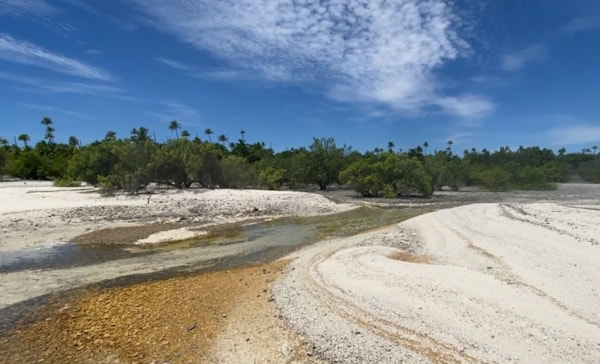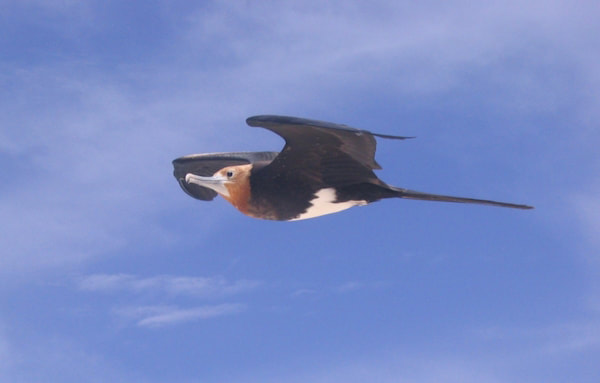Note: This is the official website of the traditional (indigenous) landowners of Manuae Atoll
History & Vision:
Manuae Island is an uninhabited atoll 100km south-east of Aitutaki in the Cook Islands. It has two separate motu totaling over 500ha (1,200 acres) of vegetated land, and a large 1,500ha pristine lagoon. This makes Manuae the largest uninhabited atoll in the Cook Islands.
Manuae was originally occupied by many Polynesian families. All the local people were removed to Aitutaki 200 years ago. Many of their descendants still live on neighbouring islands, including Aitutaki, Atiu, and Rarotonga.
Manuae is not administered by the Aitutaki Island Council - it is an independent island under the authority of its landowners - however, it is part of Arutanga-Reureu-Nikaupara Constituency (on Aitutaki) for electoral purposes only.
Drone video of Motu Te Au O Tu (Nick Henry)
After a unanimous vote by the landowners of Manuae Island the "Proprietors of Manuae Incorporated" (PMI) was established by court order in 1983 to represent the descendants of the original population. The PMI committee is elected on a regular basis by the landowning descendants.
In October 2022 the PMI established the (wholly-owned subsidiary) not-for-profit NGO "Manuae Enua Conservation Trust" (MECT) to represent the landowners’ interests in managing Manuae for conservation and sustainable development.
Only the indigenous landowners and their descendants can be elected as MECT Trustees
After a unanimous vote by the landowners of Manuae Island the "Proprietors of Manuae Incorporated" (PMI) was established by court order in 1983 to represent the descendants of the original population. The PMI committee is elected on a regular basis by the landowning descendants.
In October 2022 the PMI established the (wholly-owned subsidiary) not-for-profit NGO "Manuae Enua Conservation Trust" (MECT) to represent the landowners’ interests in managing Manuae for conservation and sustainable development.
Only the indigenous landowners and their descendants can be elected as MECT Trustees
Drone video of the fresh water pond, the southern coast of Motu Manuae and the central lagoon (Nick Henry)
Ko tā mātou ōroma:
Ko mātou, ko te Kōpapa Tāporoporo ō Manuae, te anoano pakari nei mātou i te pāruru i te tai roto, te enua, te au mea nātura pouroa, ē te au ‘akapapa’anga autara ō tēia enua ko Manuae; nā roto i te au tū’anga tāporoporo, āpi’i, e te au ‘akateretere’anga tau.
Te umuumu nei mātou i te ‘akamata mai i tētai au aranui ngātākore no te au ravenga ‘akapu’a’pinga’anga, tei ‘akataka’ia ē, “ko te au kaveinga tē kā ‘akapararauare i te au mea tau te kā anoano’ia nō tēia tuātau, matekore ē ‘akaīti mai ‘anga i te pu’a’pinga nō te au mea te kā anoano’ia ē te uki ā muri mai”
Ko tā mātou ōroma:
Ko mātou, ko te Kōpapa Tāporoporo ō Manuae, te anoano pakari nei mātou i te pāruru i te tai roto, te enua, te au mea nātura pouroa, ē te au ‘akapapa’anga autara ō tēia enua ko Manuae; nā roto i te au tū’anga tāporoporo, āpi’i, e te au ‘akateretere’anga tau.
Te umuumu nei mātou i te ‘akamata mai i tētai au aranui ngātākore no te au ravenga ‘akapu’a’pinga’anga, tei ‘akataka’ia ē, “ko te au kaveinga tē kā ‘akapararauare i te au mea tau te kā anoano’ia nō tēia tuātau, matekore ē ‘akaīti mai ‘anga i te pu’a’pinga nō te au mea te kā anoano’ia ē te uki ā muri mai”
The PMI’s vision for Manuae is for the protection of the environment, plus the cultural, social, and gender responsive empowerment of people, including economic self-sufficiency through:
- active biodiversity conservation.
- support for environmental education.
- protecting sites of cultural and historical significance.
- revival of our indigenous customs and knowledge systems.
- best practice sustainable management of our land and marine resources.
- making our island more accessible to our families, scientific researchers, students, ecotourists etc.
Background:
We the landowners have maintained a fierce connection to our island through the Cook Islands Māori legends of our “Tūpuna” - the stories of our ancestors, including tales of heroism in the face of death – for example, the famous story of “Ripou te vaánga akari”.
Ī roto i tā tātou peu Māori, e ‘akatūkati’anga mutukore tō roto i tēia ngā tū’anga, koia oki, te tiaki’anga i tā ‘au ei, e te tiaki’anga katoa i tā tētai kē atu:
Kia mātou, e takai’anga pu’a’pinga tēia nō mātou, kia ‘akamātūtū i tā tātou peu tūpuna, te irinaki nei mātou ē ka riro a Manuae ei ‘akatau’anga nā te au tū’anga tāporoporo katoatoa ō te Kūki Airani nei, penei ē, takapini āke i te ‘ao ō te Patifika.
Te umuumu nei mātou i te ‘akaāri atu e, ka ‘akapē’ea mātou, te au ‘Atuenua i te ‘akateretere matatio’anga i tō mātou uaorāi enua, ei’aa e nā tētai kē atu e ‘akatere mai.
Ka kimikimi mārama ua atu rai mātou mei roto mai i tētai ua atu putuputu’anga tāporoporo kē atu, i te mea oki ē, ko tā mātou e tautā nei nō tō mātou enua, e au kaveinga tēia te ra’i u’a a’tūra te mārama, takapini ‘ake i tēia nei ao.
Our goals:
- to work in harmony with nature.
- to become as economically self-sufficient as possible.
- to develop the island carefully and sustainably.
- maintain control over the Islands resources.
- to provide a platform to upskill, empower, and support the wellbeing of local communities.





